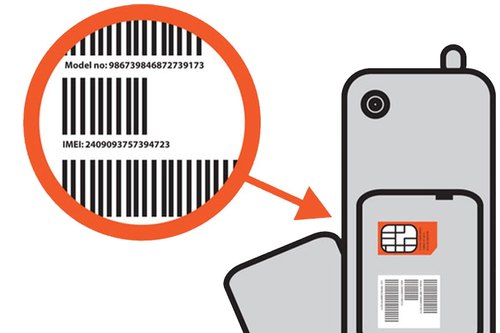Most businesses, especially the small ones, often look away from paid marketing and even consider the tactic to be ‘not worth it’. Wait, do you think the same? You are mistaken, mate. In fact, with hybrid strategies gaining ground today, your digital marketing plan needs equal doses of both organic and paid marketing efforts. Looking at the brighter side, you cannot deny the benefits that paid marketing brings to you. It may be high in cost, but paid marketing efforts give instant results.
If scaled strategically, paid marketing can do wonders for your business. Thinking what should be your approach for getting desired results? Don’t feel lost at all! In this blog, we tell you the best practices to combine paid search and social media for enhancing your marketing effectiveness. So, why wait? Let us dive straight in!
Here are some best strategies to combine paid search and social
Maintaining brand consistency across channels
According to Tara Seigal, the social media head at Pepperjam, brands should maintain a consistent image across channels (marketingland.com). That is because when you look like two different companies to your audience, it questions your credibility as a reliable brand. So, messing up with your brand consistency is never a good idea. It represents the mission, vision, and values of your organisation.
Whether it is your text message or the visuals, make sure your social media posts & ads are in sync with your PPC landing page. Since paid traffic is more conversion-oriented than its organic counterpart, you should focus on maintaining a consistent tone and message to highlight the USP of your brand in both of these campaigns. Thus, remember, brand consistency is salient in putting your message across as clearly as possible. And a higher user engagement will automatically translate into better revenue generation for your business.
Researching headlines and information sharing
To target buyers in sponsored search campaigns, you have to research the audience thoroughly and write ad headlines cautiously. Now, would be you intrigued if we said you could use this information to create your social media content as well? To get started, you can either search manually or you may use tools like Answer the Public that use niche keywords to create questions that people search. Once you have gathered this information you can incorporate them into your social ads.
Likewise, you can research trending topics on social media and tweak them for your PPC campaigns also. See, at a time when 52% of marketers are using not less than four marketing channels as against 44% in 2015, cross-channel marketing or optimization is the key. In fact, this tried-and-tested mean of reaching and converting more audience is another way of maintaining your brand consistency and driving business value. As you can understand that content plays a big role in influencing your audience, settle for nothing but quality content for your campaigns.
Keeping a tab on your competitors using tools
In this competitive marketing ecosystem, competitor analysis is an important survival tactic for any business. Whether you are competing for followers, traffic or sales, you’re always neck and neck with several other brands. Since your business does not function in a silo, it becomes important to keep an eye on the competition. Right from paid ads to social media, you’ll find an array of analysis tools to measure the level of competition across platforms.
While you may use Sprout Social to evaluate competition on social media, iSpionage is ideal for tracking your PPC competitors. With extensive data right in front of you on the computer screen, it gets simpler to understand how you are faring against your competitors. Do you think you’re still far from reaching the target audience on social media, for example, Instagram? In that case, you have to create a winning strategy to win over the audience that is still following your competitors. All in all, competitive analysis tells you on which platform your marketing plan is weighing heavy – paid search or social.
Preparing a list of lookalike audience
Have you received a phenomenal response to your paid search campaigns? That’s great. But you cannot give up just yet, because it is now time for you to use the customer data for creating a lookalike audience for social media platforms, especially Facebook. See, based on the traits of your converted customers through paid search, you can identify which users share the same interests and are more likely to respond to your social media ads.
Through this strategy, you can also rekindle interaction with your old customers who have stopped interacting with your brand for one reason or the other. To get started with this tactic, you have to leverage Facebook because it allows automatic targeting of lookalike audience by following the list of custom audience you have already uploaded on its platform. Once again, this point shows why digital marketing channels should not be seen or treated as silos and should be integrated and combined for optimal conversion results. Sounds too overwhelming? Hire an expert in digital marketing services and get your peace of mind.
Analysing impression and reach on social media
According to any social media marketing agency, being thorough with social media metrics is crucial. We recommend you to take a step further. Use the insights earned from tracking the metrics in refining your search campaigns. So, the next time you measure the metrics of impression or reach on social media, make sure you are using its insights in your AdWords campaign. While reach is the overall number of people that can see your ad, the impression is basically the total number of times your ad is shown, irrespective of the click-through rates. Once you have collected these data, your job is to retarget those potential customers with modified search ads.
With video and story-based ads grabbing eyeballs, there is no wonder why user engagement through social ad impression has increased by 20% (hootsuite.com). Hence, to get the best results out of this metric, you can use the data for enriching your marketing campaign on a different platform. Moreover, to trigger their interest in your brand and product or services once again, you can make irresistible offers with the hope of converting those particular audience this time around.
Final Thoughts
Combining insights from both paid search and social can help grow your business vigorously. If you also include search engine optimization in your marketing strategy and take SEO services, it will boost your business through organic search results. You have been dicey about mixing the two or three, now you know where and how to start. To make your brand stand out from the crowd, leverage the hit combination of search and social to make great strides in digital marketing!









